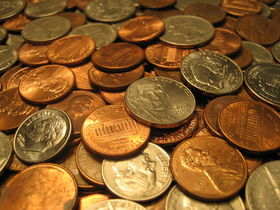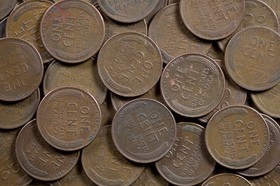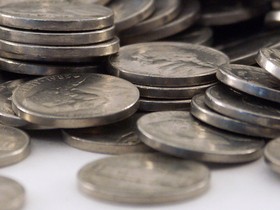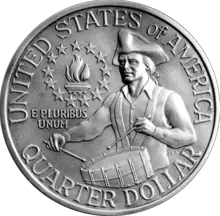 A lot of people like to know about the kinds of coins they can find in circulation. I’m one of those folks.
A lot of people like to know about the kinds of coins they can find in circulation. I’m one of those folks.
As a coin collector, I always keep my eye on the change that comes in and out of my hand.
As an active numismatist since 1992, I can’t honestly tell you how many coins I have checked out, but I know the number is safely well into the tens of thousands.
Of course, I am counting coins I find in circulation, too — not just the ones I have.
But many coins are getting hard to find in pocket change…
Certain Coins Becoming Rare
Over the years, I have been noticing some trends.
I am starting to notice it is getting a little harder to find certain coins I used to come across relatively frequently years ago.
Maybe you have see that too, too. Or maybe it’s just me.
Or perhaps I can attribute my counts to local circulation trends.
Nothing I am stating here is scientific. It is simply anecdotal. Hopefully, you find these observations helpful to you.
In fact, none of the coins I mention here are really worth much money. I am not suggesting they make great investments, either. I am not a coin investment expert, by the way.
Disappearing Wheat Pennies
 Question: Can you guess the first coin I ever officially collected?
Question: Can you guess the first coin I ever officially collected?
Answer: Wheat pennies, struck from 1909 to 1958.
In fact, it was my discovery of a 1941 penny in change from my allowance that got me into this hobby as a tween-age boy. But you know what? I am not finding wheat pennies too often anymore.
Wheat pennies were last struck a bit more than 30 years before I first got into this hobby. Now, the last wheat penny was officially struck over 50 years ago. Is it just a coincidence, or does nearly 20 years more of being “obsolete” mean something to a coin’s circulation habits? Perhaps it does.
I remember when I first started collecting coins in the early 1990s, I could find wheat cents every now and then. Maybe I was just lucky. Or maybe there were still enough wheat cents floating around back then that it wasn’t that hard to find them.
At any rate, I find myself having to look much harder now for a wheat cent to pop up in circulation. I have to wonder if wheat pennies will still be coins that the average person could expect to find in circulation a decade from now.
Not that wheat pennies are worth all that much. The most common ones are worth only a few cents if well worn.
But that doesn’t matter to many people. Simply finding an old wheat penny warrants some to take it out of circulation and store it away in a collection, a jar, a drawer, or a cigar box. Whenever I see a wheat penny, I tuck it away, too. It’s almost a natural reflex.
Old Jefferson Nickels Are Disappearing
 I’ve heard many say over the years that Jefferson nickels are probably among the easiest coins to collect and one of the cheapest series to complete.
I’ve heard many say over the years that Jefferson nickels are probably among the easiest coins to collect and one of the cheapest series to complete.
Jefferson nickels, first made in 1938, do have some scarce dates (like the 1939-D and 1950-D). But even the scarce dates don’t cost a whole lot. They can be had for under $20 apiece. Common dates made before the 1960s are often worth less than 20-50 cents apiece in worn grades.
Yes, Jefferson nickels provide few real challenges for collectors, but some of the old ones are getting tough to find in circulation. By 1993, I was on the Jefferson nickel bandwagon, and I was collecting them left and right.
I confess I had to buy several dates from a coin dealer to fill up my 1938-1961 Jefferson nickel Whitman coin folder back then. But, you know what? I was able to find a good deal of the common dates for that folder right from circulation — save for the silver, wartime issues.
Even then, I found a 1943 silver piece. I did not even have to look all that far to find those nickels. I did minimal roll searching. Many of the old Jefferson nickels (in my view, that would include any from before 1960) I pulled from simple pocket change.
I still do equivalent searching today for those old Jefferson nickels and do not find it so easy anymore to locate anything dated from the 1930s, 1940s, and 1950s. I can’t tell you why. Most were made from the same composition as the more recent Jefferson nickels (75% copper, 25% nickel).
They look the same as the newer Jefferson nickels. I have to chalk it up to a bunch of collectors like me who are realizing that the old Jefferson nickels are indeed getting old and are storing them away for hoards, collections, and investments.
At any rate, I bet I will be getting much more excited about finding a dirty 1939, 1941, or 1956 nickel in 10 years than I even do now.
Disappearing Bicentennial Quarters
 Wow — who would have thought I would be putting the highly common 1976 Bicentennial quarter on this list? I would not have guessed that a few years ago.
Wow — who would have thought I would be putting the highly common 1976 Bicentennial quarter on this list? I would not have guessed that a few years ago.
Believe it or not, I am simply not finding these coins anymore. Strange.
In the early and middle 1990s, I recall times where I would find several in a week. Why am I not finding Bicentennial quarters much anymore?
It probably has a lot to do with the attention the 50 State Quarters program (1999-2008) drew to the Washington quarter. With tens of millions of people turning their eyes to the quarter, many undoubtedly began snapping up the unique Colonial drummer boy design featured on the back of the 1776-1976 Washington quarter.
As things go, the Bicentennial quarter is still worth only face value if worn. However, it also makes for a neat addition to any coin collection regardless of the coin’s grade.
RELATED:




